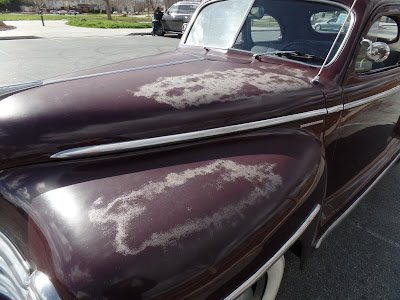 |
| This was Honda's copy of the Harley Wide Glide. My bike looked like this, at first. |
Back several years ago, I modified my Honda 1100 Shadow to resemble a Harley Wide Glide. I wish that I could find some pictures. I removed the passenger seat and sissy bar, attached a pair of leather bags, and bolted on a set of high bars. To top it off I added a flame graphic to the tank sides, I've always wanted a vehicle with flames. It did look pretty good.






